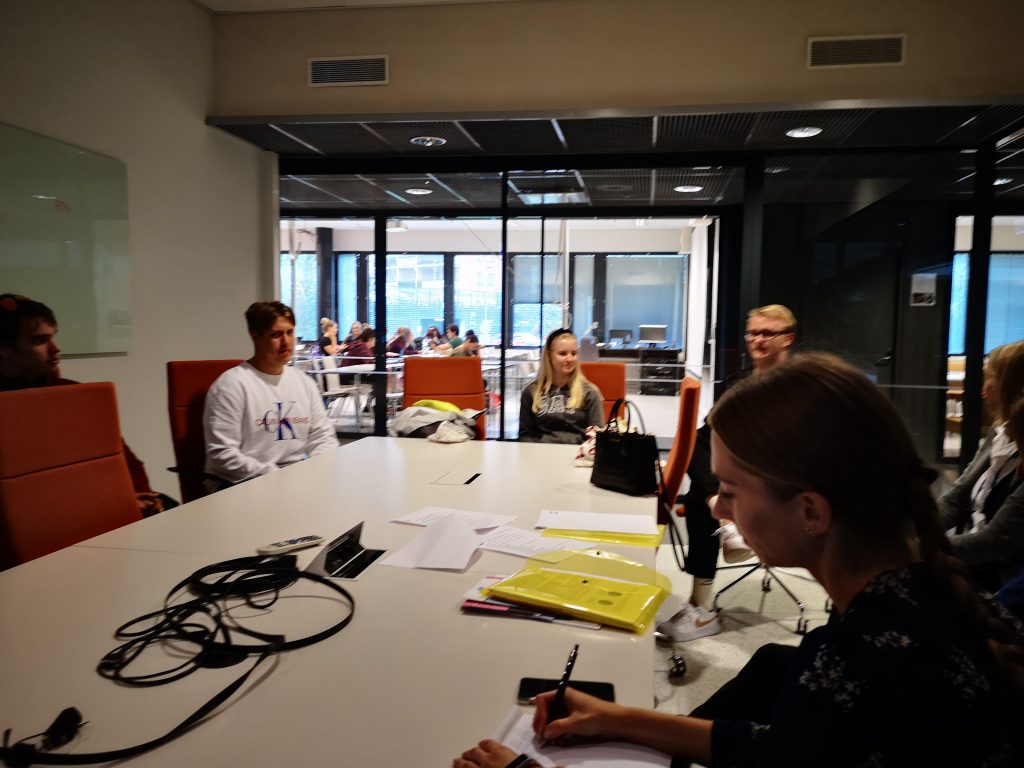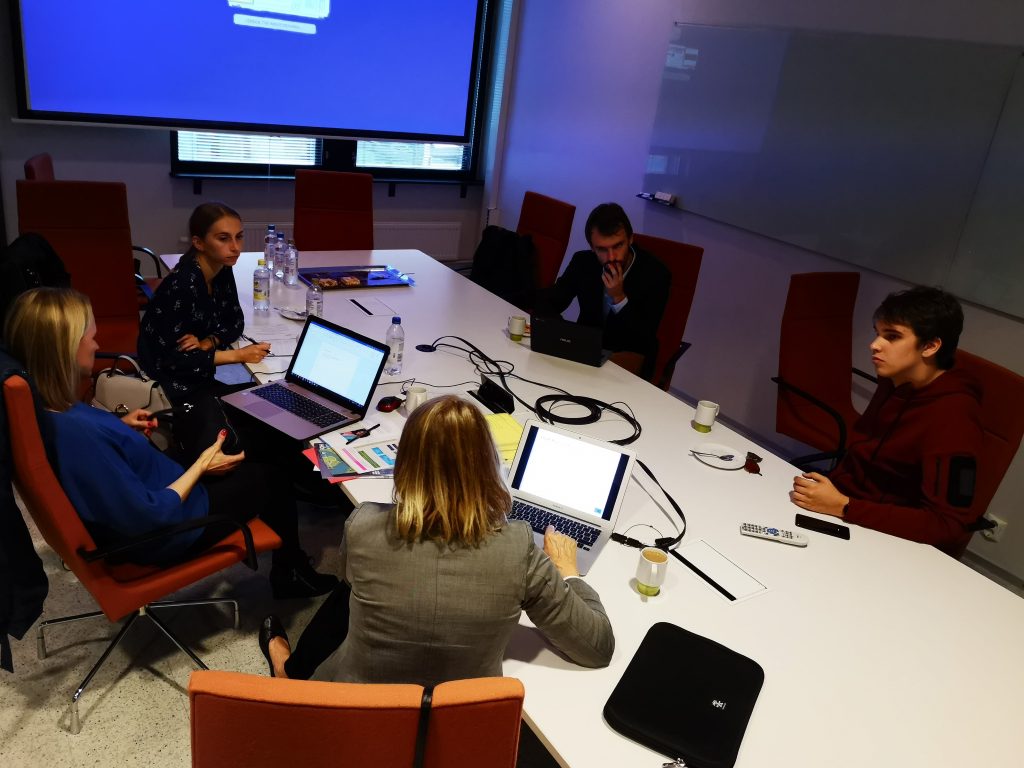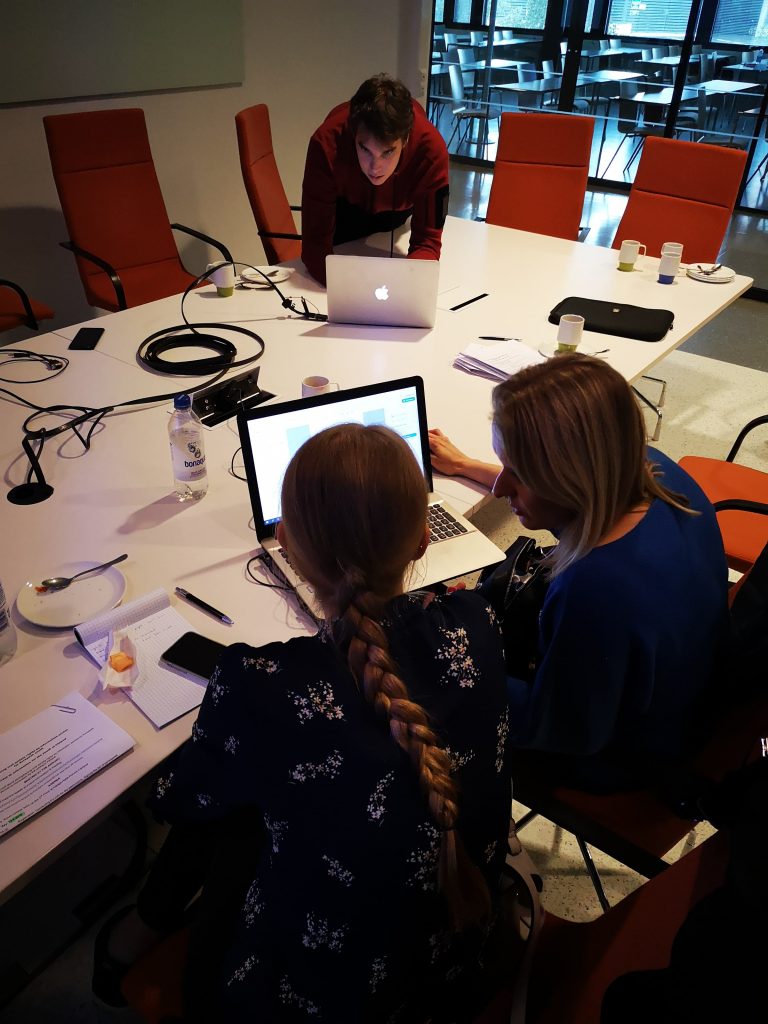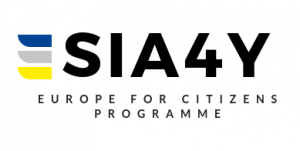NOTES FROM THE SIA4Y – STRENGTHENING CIVIL SOCIETY RIGHTS BY INFORMATION ACCESS FOR EUROPEAN YOUTH Theme: Access to information for the youth in Finland
Citizens’ dialogue event about strengthening civil society rights by information access for European youth: discussing access to information by the young in Finland.
Place: Haaga-Helia Porvoo Campus
Day: 13-14.09.2019
Participants from Poland, Belgium, Finland


Before the start of the main event of the project, participants had the opportunity to visit Taidetehdas – Culture and Congress, an important center of cultural activity of the Porvoo commune serving young people to develop their talents and acting as a local meeting place for local and regional young in which initiatives organized by young people took place. It is one of the forms of support for grassroots inhabitants’ initiatives by the city administration and is an ideal example of youth operation and activation.
Then the participants had the opportunity to visit Haaga-Helia Porvoo Campus – a newly built student campus adapted to the needs of young people in accordance with the new trends. During the tour one could hear about planned events organized by students: like open days, student photography days.
Opening by Dr Eila Heikkila: The main part of the event began with the organizers’ speech dedicated to introducing participants to the context of the general situation of young people.
Finland is famous for a variety of reasons, one of those being that the country has its own law for respecting the rights of young people. The Youth Actpromotes social inclusion, opportunities to participate in decision-making in matters of concern, development of individuals’ abilities, the improvement of living conditions and the availability of free-time hobbies and youth work, to name a few. The Government Decree supports the implementation of the act by, for example, specifying the allocation of the duties at the national, regional and local levels.
Then we had the opportunity to hear about: Existence of a National Youth Law
Finland has had separate legislation on youth work since the beginning of the 1970s. The Youth Act covers youth work (see: the Glossary) and activities, youth policy and the related responsibilities of the central and local government, cross-sectoral cooperation as well as state funding. The Youth Act is complemented by the Government Decree on Youth Work and Policy.
In addition, several other laws, such as the Child Welfare Act and the Basic Education Act, refer to youth issues and address the rights and obligations of young people.
The National Youth Work and Youth Policy Programme coordinates the objectives and measures determined by the key ministries for promoting young people’s growth and living conditions, which are and designed to contribute to the attainment of the objectives defined in the Youth Act
According to the Youth Act, the Government shall adopt a national youth work and policy programme every four years. The National Youth Work and Youth Policy Programme (2017-2019) based on the Youth Act (111/2017) and the Government Decree on Youth Work (211/2017) was accepted on 12th of October 2017. Consultation related to the writing process of the programme targeted at different stakeholders, including young people took place in May-June 2017. The consultation process included both the possibility of writing statements and of commenting on the draft online
Next part was conducted to question from the questionnaire prepared by scientific partners.
After the implementation of these two elements, the main part of the event began – which was, an open discussion in the form of Group work – discussion in a small group of student and guests. During this discussion, participants tried to answer the questions:
- From when students can get the money?
- They get money from the government
- Kela – give chance to take a student loan
- Kela pays 40% of student loan when the student will pass all exams on time
- How students can get the money?
- To get money from Kela students need to fill in an application which is available online and it’s easy to get a loan. Students can do it when they want to fill application and they have to wait around 3 weeks to get money.
- Kela is a social insurance institution
- They have a tax refund depending on their income. It’s easy to get it because student prepare documents by themselves
- How they apply for school?
- Finland has a centralized system with a bid database, which is available online. Students can find there information’s about the university and what kind of courses of study are at each university.
- To go apply for university students need to have good grades and each of student have to pass the entrance exam. There is one exemption from exams which is getting a high score at competitions e.g. math or chemical competition
- Ohjaamo – service where different ministries are cooperating. They create one place where young people can come if they have a problem. Students who will come to Ohjaamo can do test and people who work there tell to this person what kind of studies he/she should choose or to which work he/she should go
- “The one place stop”
- ¼ of youth is a social margin, they do not study, they do not have a job and they do not have an idea what to do in life
- When they finish high school (boys) have to go to the army for 6-12 months. After this period they do not go to university because they don’t have time to prepare for entrance exams and they go to work.
- In Finland when students go for the first time to university they get additional points, if they go for the second time/ they would like to change the field of study they don’t have this additional points and it’s harder to get accepted in the university.
- They don’t have enough good specialist/ doctors for mental health problems
- Do you have easy access to the information?
- It’s easy to get information’s but it’s hard to meet face to face with politicians
- The easiest way to contact politicians are social media e.g. Facebook or Twitter where people can discuss with them on the open space
One of the next topics discussed was the state of Finish civic participation, interesting from the point of view of the SB YCGN project.
The rights of all young people to participate in planning, decision-making and implementing the matters related to their lives are well recognized in the law base starting from the Constitution. Since 2006, the Youth Act specified the youth participation and the right of young people to be heard in the municipalities as a legal obligation. Based on the Youth Act (2016) Section 24 – “Participation, consultation and influence”: “Provisions on the opportunities to be provided for young people to participate and exert an influence in youth councils or similar youth advocacy.
In Finland, membership of a political party is only possible for those who are eligible to vote, as per the Act on Political Parties. A party is a registered association that is entered on the party register kept by the Ministry of Justice. As of December 2016, there are fourteen parties registered, of whom eight are represented in parliament.
Young people over 18 years old can stand as political candidates in local, national and European elections. There is no quota of seats reserved for young people nor are there any provisions aimed at facilitating young people to stand as political candidates.
Youth representation bodies:
- Youth parliament – There is not a body of young people to represent young people, for example a youth parliament, as part of the constitutional structure or based in law.
- Youth councils and/or youth advisory boards – According to the Local Government Act, all municipalities must have a youth council or equivalent action group for young people. The youth council should be given the possibility of influencing planning, preparation, implementation and follow-up activities in different sectors that are relevant for residents’ well-being, health, studying, environment, living and public transport, as well as other matters that the youth council considers relevant. Currently, there is ongoing government reform at the regional level.
Discussion on civic participation also followed:
- In Porvoo and other Finnish cities, they have youth council. Municipality tries to involve youth in the decision-making process because they want to get the student’s voice. Usually youth councils don’t have a real political impact, but there are few organizations which have big impact.
- Hot topic to discuss for students is climate change and emigrants. It depends of person but most of educated people and young people are pros and older people are against emigrants.
- Usually, when young people would like to organize event or meeting they have to go to private sector to get funds. The municipality is not giving money for young people. They don’t have civic budget, but general Finns are happy about their cities and what is developed.
- When it comes to transparency they trust for municipality workers. They have clear information’s what authorities are doing and what plans they have. Youth and not only them have problem with language which is used by authorities and municipality workers.
The final part of the event was presentation made by Eila Heikkila about citizen dialogue:
- Each 4 years they have election to parliament.
- They have a youth program which is updated when new authorities come to government. They are checking what has been done and what should be changed when it comes to youth. Youth policy is insurance for youth, they have chance to develop themselves and live in good conditions. This is combined Youth Guarantee that they will study or they will get work.
- They created good practice which is “the one-stop – Guidance Center Model”.
- In Finland youth counts as people in age 15-29.
- If they have problem then for free they can get help from Chamber of commerce.
- They have one service for young people where is life management
- Finnish students can get “small loan” which can use to buy e.g. computer or something else what will help them study and learn.
- Going to university is expensive in Finland because if somebody would like to be a doctor he/she need to pay 10.000 EUR to prepare for exams.
One important topic that connects with Access to information for the youth is social inclusion:

Social inclusion is one of the most central themes to the Youth Act and youth policy in Finland. According to the 2016 Youth Act, the purpose of the Act is to “promote the social inclusion of young people and provide them with opportunities to exert influence and improve their skills and capabilities to function in society”. Social inclusion is a wide concept. Therefore, promoting social inclusion is an approach, which can be applied in several sectors of youth policy. For example, raising the employment rate, lowering the number of early school leavers, and reducing the number of people living at risk, as well as promoting multiculturalism, sustainable development and gender equality are all part of social inclusion policies. In practice, it can mean supporting early teen, youth, student and other organisations to create equal opportunities for participation in multicultural activities and community life and to gender mainstreaming as part of legislation drafting.
Inf prepared by Paulina Lieder, youth participant from the Association of Polish Communes to Euroregion Baltic (project partner).









